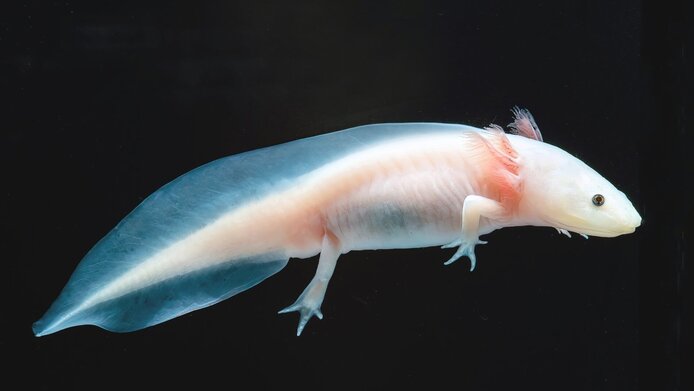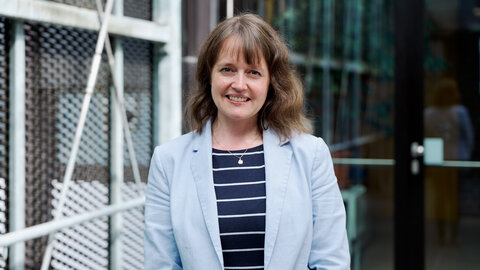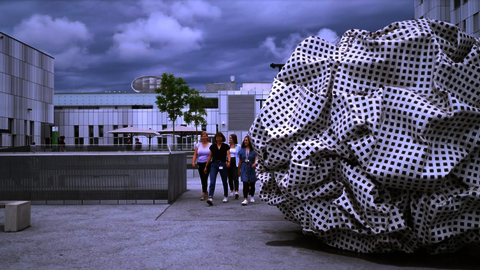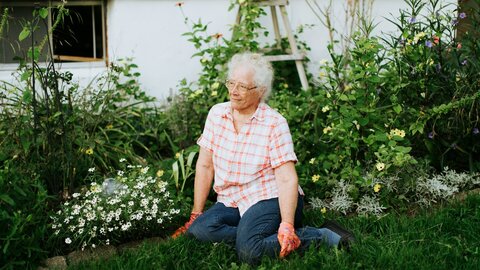The miraculous cell memory of the axolotl
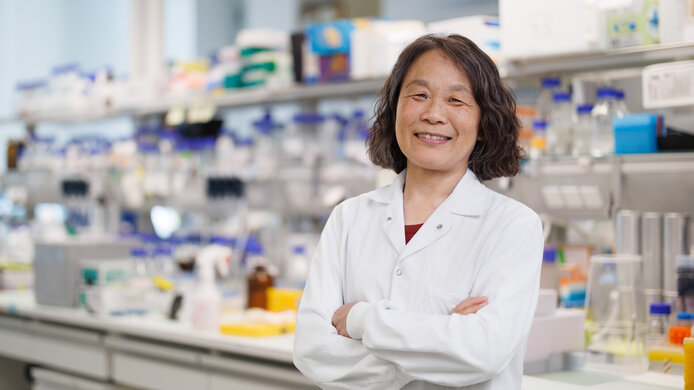
You and your team recently announced a scientific breakthrough in the journal Nature. You described a mechanism by which cells in the axolotl ‘know’ where they belong during regeneration. What does this discovery of positional memory mean for you and your team and for your field of research?
Elly Tanaka: The concept of positional memory has been a mystery in regeneration for a very long time. People have known that cells in the different parts of limbs must have a kind of memory – something that signals to them whether they belong to an upper arm, a thumb, or a pinky. In our research with the axolotl, we indentified a protein called Hand2, which is a so-called transcription factor responsible for the organization of positional memory. Hand2 controls a large set of genes that are switched on during regeneration and allow cells to communicate with each other.
Without this factor, no limb could regenerate itself properly. Many years of research and a series of publications have led to this realization, which will probably also be included in future textbooks. So I feel like we have solved a very long-standing mystery in regeneration. In the future, researchers considering the regeneration of body parts will have to take this newly discovered mechanism into account.
How do you observe molecular processes during regeneration in the axolotl?
Tanaka: Leo Otsuki – the scientist who performed the experiments in the laboratory – was able to observe exactly where the expression factor Hand2 is active in the arm or finger and what role it plays in regeneration. To do this, we developed transgenic axolotls that activate a luminescent protein and make it visible to us where it is produced. In transgenic animals, we can also specifically switch off the expression factor – when it’s turned off, the limb doesn’t regenerate.
One particularly significant realization was: If we introduce Hand2 into cells that do not normally produce the protein, it can change the identity of the cell. For example, a thumb cell converts into a pinky finger cell. The methods used include transgenic model animals, which we developed in our laboratory, molecular biological RNA profiling to detect gene activity, and CRISPR technology, known as “gene scissors,” for targeted gene modification.
How close do these research results bring us to reprogramming cells in humans in regenerative medicine?
Tanaka: The gene responsible for the formation of Hand2 is active in all vertebrates. The mechanism for organ formation is a very ancient factor in evolutionary terms. If we wanted to try to regrow a limb in humans, the expression factor would be absolutely necessary. For example, we have already investigated the occurrence of the factor in the skin of mice and were actually able to detect it in certain cells. The question is whether it is active in enough cells to be potentially useful for therapies.
Much more research is needed on its role in mammalian tissues. Immune system reactions and many other influencing factors must also be taken into account here. However, the findings are also significant beyond the potential of limb or organ regeneration in humans. For example, we are now starting to work with research groups to recreate organoids – models of human tissue and organs – with the help of axolotl research.
Elly Tanaka, Director of the Institute of Molecular Biotechnology (IMBA) of the OeAW receives the FWF Wittgenstein Award. The US biochemist is considered a leading specialist in the field of regenerative biology.
What will be the key questions of your future research work?
Tanaka: One particularly interesting question is: How can the regenerating stem cells grow adult-sized body parts? During regeneration, the number of stem cells that work together to form the limbs is much greater than in the embryo. Somehow, the axolotl manages to recreate an environment in which this large group of stem cells can communicate with each other – even over long distances in the body. We didn’t know that the molecules responsible for these signals could actually function over such great distances – it's as if a person in Vienna were trying to talk to someone in Lower Austria, for example, without a telephone. So here is another riddle waiting to be deciphered. And of course, the question arises: Can these principles also be implemented with human cells?
What impact will the FWF Wittgenstein Award, with its prize money of €1.9 million, have on your research work?
Tanaka: The award opens up interesting new possibilities. One plan is to carry out more comparative experiments with axolotl cells and human cells. Although we already have approaches in this direction, we can now take a much closer look at human stem cells. Another point is to apply so-called “unbiased screens” to regeneration research with the axolotl. This involves systematic, large-scale genetic analyses that test many variants – an approach that is widely used in cancer research, for example. The aim is to discover previously unknown molecular mechanisms that play a role in regeneration. Thanks to the Wittgenstein Award, we can create new positions to implement pioneering projects in these areas.
About the research project
Tanaka’s research group focuses on the molecular and cellular mechanisms behind the regeneration of limbs and the spinal cord in the axolotl salamander species. They are working to identify the stem cells, signaling pathways, and factors involved in controlling the regeneration process, and transferring the findings to other organisms, especially mammals. Based on axolotl research, Tanaka and her colleagues have already been able to generate spinal cord organoids from mouse stem cells and retinal tissue from human stem cells.
Speaking of new positions: Many researchers are suffering from the current political climate in the US. Have you noticed increased interest from US researchers in coming to Vienna?
Tanaka: Yes, there are more and more applications from the US. Recently, students and graduates from the California Institute of Technology, Harvard University, and MIT have shown interest in our regeneration research at the interface of axolotls and mammals. Maybe the Wittgenstein Award will enable us to hire some of them. We are also clearly seeing increased interest here at the Institute of Molecular Biotechnology (IMBA), an institute of the Austrian Academy of Sciences. We recently advertised a position to head a working group and received twice as many applications from the US as before – including scientists who have published in top journals. However, here at IMBA and the Vienna BioCenter we also provide a very unique and attractive environment for an international research community: excellent core facilities, technologies, and state-of-the-art methods, plus an extremely collaborative and unbureaucratic working culture. My lab has always received many good applications. However, Vienna is being increasingly noticed as an outstanding location for science.
When you look back on your scientific career to date – what has motivated you and driven you to achieve top performance?
Tanaka: The biological question and the systems I work with are simply fascinating. Every time I look at the axolotl – how the tissues are organized, how the regeneration happens – I still see a wonder of nature. What also motivates me are the many talented people I work with, but also the appreciation and support I receive from the research institutions – not least from the Austrian Science Fund (FWF). We can submit research proposals and then really conduct basic research. The fact that basic research is seen as something valuable in Austria that should be supported is a difference to the USA today – and this feeling of being supported is very motivating for me.
Elly Tanaka
Elly Margaret Tanaka is Scientific Director of the Institute of Molecular Biotechnology (IMBA) of the Austrian Academy of Sciences (ÖAW), where she runs her research group on molecular mechanisms of regeneration in vertebrates. Tanaka’s decades of research have made a significant contribution to transferring the latest methods of molecular biology to the salamander axolotl. As a result, her research group at the Vienna BioCenter is seen as one of the world’s leading centers for basic research on regeneration.
Born in the USA, the biochemist’s career took her to Harvard University, the University of California in San Francisco, and University College in London. In 1999, she established a research group at the Max Planck Institute of Molecular Cell Biology and Genetics in Dresden. She was appointed as a professor at the Technical University of Dresden in 2008. She joined the Research Institute of Molecular Pathology (IMP) in Vienna in 2016, before transferring to the IMBA in 2024. In 2017, Tanaka received the Erwin Schrödinger Award from the Austrian Academy of Sciences, and in 2023 she was awarded an Advanced Grant from the European Research Council (ERC). The biochemist is currently head of the FWF project “Regenerative strategies for cardiac repair.”
The Wittgenstein Award
The FWF Wittgenstein Award is Austria's most highly endowed research award and is granted to outstanding researchers from all disciplines. The award, endowed with €1.9 million, supports the researchers’ work and guarantees them independence and flexibility in implementing their projects, giving them the opportunity to advance their research activities at the highest international level.
